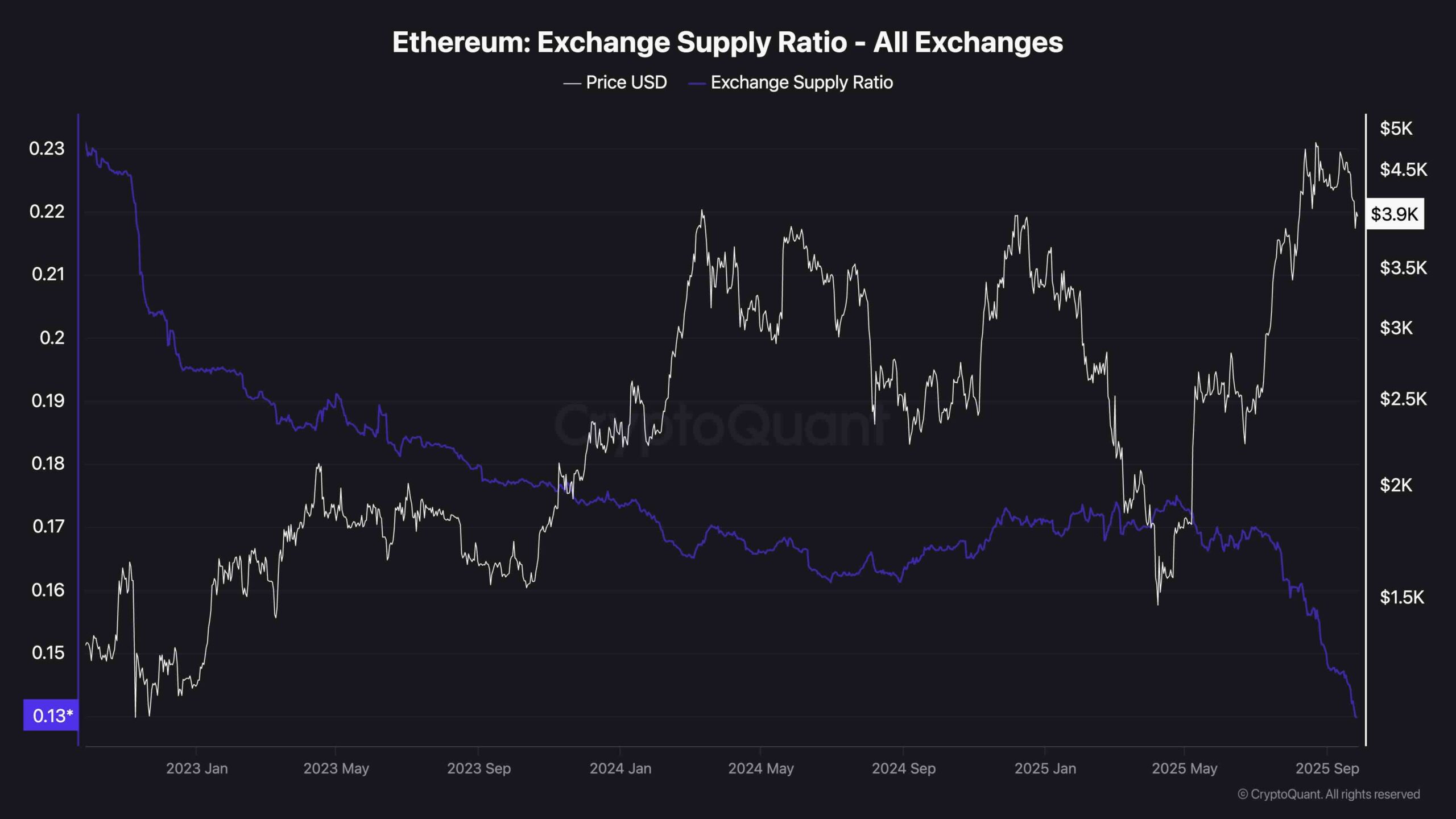Business Plan Competition Examples Winning Strategies
Navigating the world of business plan competitions can be daunting. Success hinges on understanding not only the mechanics of the competition itself—from judging criteria to presentation formats—but also the key elements that distinguish winning entries. This exploration delves into successful business plan examples, analyzing their structures, compelling narratives, and impactful visual presentations. We’ll uncover the strategies that propel winning plans to the top, providing insights and actionable advice for aspiring entrepreneurs.
From dissecting winning business models and market analyses to understanding the critical role of a strong executive summary and compelling visuals, this guide offers a comprehensive roadmap for crafting a business plan that not only wins competitions but also lays a solid foundation for future business success. We’ll examine common pitfalls and offer strategies for avoiding them, ensuring your plan stands out from the competition.
Understanding Business Plan Competition Structures
Business plan competitions offer aspiring entrepreneurs a valuable platform to refine their business ideas, receive expert feedback, and potentially secure funding. Understanding the typical structure of these competitions is crucial for effective participation and maximizing the chances of success. This section Artikels the key phases, judging criteria, presentation formats, and timelines commonly encountered.
Typical Phases of a Business Plan Competition
Business plan competitions generally follow a multi-stage process. Early stages often involve submitting a concise executive summary or a shorter business plan. Subsequent rounds typically require increasingly detailed submissions, culminating in a final presentation to a panel of judges. Some competitions may include workshops or mentorship opportunities along the way to help participants hone their plans. For instance, the Rice Business Plan Competition, one of the most prestigious competitions globally, involves multiple rounds of submissions and presentations, with increasing scrutiny at each stage.
The final round typically includes a live pitch to a panel of experienced investors and entrepreneurs.
Judging Criteria in Business Plan Competitions
Judging criteria vary across competitions but typically focus on key aspects of a viable business. Common criteria include market analysis (demonstrating understanding of the target market and competitive landscape), team (assessing the experience and capabilities of the founding team), financial projections (evaluating the financial viability and potential for return on investment), innovation (measuring the originality and potential impact of the business idea), and execution plan (judging the feasibility and clarity of the proposed plan for implementing the business).
For example, a competition focused on social impact might place greater emphasis on the social benefit and sustainability of the proposed venture, while a competition focused on technology startups might prioritize technological innovation and market disruption.
Common Formats for Presenting Business Plans in Competitions
The format for presenting a business plan in a competition varies. Some competitions require a written business plan, while others focus primarily on an oral presentation. Regardless of the format, clarity, conciseness, and persuasiveness are crucial. Common presentation formats include PowerPoint presentations, pitch decks, and video submissions. Many competitions also allow for interactive Q&A sessions with the judges, allowing for a more dynamic exchange of information and the opportunity to address specific concerns or questions.
The length of the presentation and the level of detail expected will vary greatly depending on the specific competition’s rules.
Sample Timeline for a Business Plan Competition
A typical business plan competition might unfold over several months. A sample timeline could include:
- Phase 1 (Month 1-2): Competition announcement and application submission deadline. This phase often involves submitting a short executive summary or preliminary business plan.
- Phase 2 (Month 3-4): Selection of semi-finalists. This stage might involve a more detailed business plan submission and potentially interviews with the organizers.
- Phase 3 (Month 5-6): Semi-finalist presentations and feedback. Participants refine their business plans based on feedback received.
- Phase 4 (Month 7): Selection of finalists. This often involves a more comprehensive business plan submission and a presentation to a panel of judges.
- Phase 5 (Month 8): Final presentations and awards ceremony. Finalists present their business plans to a larger audience and judges, with the winners announced at the end.
Specific deadlines and stages will, of course, vary based on the individual competition.
Analyzing Winning Business Plan Examples
Analyzing successful business plans offers invaluable insights into effective strategies and market approaches. By examining key elements of winning plans across diverse industries, we can identify common threads and best practices applicable to a wide range of ventures. This analysis will focus on three distinct examples, comparing their business models, market analyses, and financial projections.
Winning Business Plan Examples Across Industries
Three examples of winning business plans, each representing a different industry, will be examined. These examples, while hypothetical to protect sensitive information, are representative of successful strategies observed in real-world competitions.Example 1: A sustainable food delivery service focusing on locally sourced ingredients. This plan excelled due to its strong emphasis on environmental responsibility, appealing to a growing segment of environmentally conscious consumers.
The business model incorporated a multi-tiered pricing structure that incentivized sustainable practices by both producers and consumers.Example 2: A tech startup developing AI-powered personalized education software. Its success stemmed from a clearly defined target market (students struggling with specific subjects) and a robust value proposition (improved learning outcomes through customized learning paths). The innovative use of technology and a detailed understanding of the education sector were key differentiators.Example 3: A boutique fitness studio offering specialized, high-intensity workout classes.
This plan demonstrated a strong understanding of its local market, leveraging demographic data to identify underserved customer segments. The business model focused on creating a premium brand experience, justifying a higher price point through exclusive offerings and personalized coaching.
Comparison of Business Models
The three examples presented showcase diverse business models, yet share common elements. The sustainable food delivery service utilized a B2C (business-to-consumer) model, directly connecting producers and consumers. The edtech startup employed a B2B2C (business-to-business-to-consumer) model, partnering with educational institutions to reach students. The boutique fitness studio also utilized a B2C model, focusing on direct customer engagement and personalized services.
A key difference lies in the scalability potential; the edtech startup possesses higher scalability potential than the fitness studio due to the digital nature of its product.
Market Analysis Approaches
Each winning plan presented a unique approach to market analysis. The sustainable food delivery service employed a combination of qualitative and quantitative research, including surveys and market trend analysis, to demonstrate the growing demand for sustainable food options. The edtech startup conducted extensive market research, including competitor analysis and detailed user testing, to validate the need for its personalized learning software.
The boutique fitness studio leveraged demographic and geographic data to pinpoint specific market segments and assess competition within its localized area. All three demonstrated a strong understanding of their target audience and the competitive landscape.
Financial Projections Comparison
| Business Plan | Year 1 Revenue (USD) | Year 3 Revenue (USD) | Projected Profit Margin (%) |
|---|---|---|---|
| Sustainable Food Delivery | 150,000 | 750,000 | 15 |
| AI-Powered EdTech | 200,000 | 2,000,000 | 20 |
| Boutique Fitness Studio | 100,000 | 300,000 | 25 |
Key Elements of a Compelling Business Plan
A compelling business plan is crucial for success in a business plan competition. Judges are looking for more than just a good idea; they want to see a well-structured, persuasive argument for the viability and potential of your venture. This requires careful consideration of several key elements, each contributing to a holistic and convincing presentation.
The Importance of a Strong Executive Summary
The executive summary is often the first—and sometimes only—part of the business plan a judge will thoroughly read. It’s your elevator pitch, distilled into a concise and compelling narrative. A strong executive summary needs to immediately grab the reader’s attention, highlighting the key problem your business solves, your innovative solution, the market opportunity, your team’s expertise, and your projected financial performance.
It should be a standalone document, capable of conveying the essence of your entire plan. Think of it as a persuasive teaser trailer for a compelling movie – you need to create enough intrigue to make them want to see the whole thing. Avoid jargon and focus on clear, concise language. Quantifiable results and a clear call to action further strengthen its impact.
For example, instead of stating “we will increase market share,” say “we project a 20% increase in market share within the next two years, based on our analysis of the current market trends and our competitive advantages.”
Examples of Effective Value Propositions
A strong value proposition clearly articulates the unique benefits your product or service offers to customers and why they should choose you over competitors. Winning business plans often showcase value propositions that are both innovative and address a significant market need. For example, a sustainable food delivery service might highlight its commitment to reducing food waste and its use of eco-friendly packaging, appealing to environmentally conscious consumers.
Another example could be a software solution that streamlines a complex business process, saving clients time and money, a clear and quantifiable benefit. A successful value proposition is concise, memorable, and easily understood, demonstrating a clear understanding of the target market and their needs.
Components of a Persuasive Competitive Analysis
A thorough competitive analysis demonstrates your understanding of the market landscape and your ability to navigate it successfully. Judges look for more than just a list of competitors; they want to see a strategic assessment of your competitive advantages and disadvantages. This section should identify key competitors, analyze their strengths and weaknesses, and clearly articulate your competitive advantage – what makes your business unique and better positioned for success.
A Porter’s Five Forces analysis can be a valuable tool here, providing a structured framework for examining industry competition, supplier power, buyer power, threat of substitutes, and threat of new entrants. Visual aids, such as a competitive matrix comparing key features and pricing, can also enhance the clarity and persuasiveness of your analysis. For instance, you might use a SWOT analysis to highlight your strengths, such as a patented technology or a strong team, and address weaknesses proactively with mitigation strategies.
Checklist of Essential Elements for a Successful Business Plan Competition Entry
A successful business plan competition entry requires meticulous attention to detail and a clear understanding of the judging criteria. Before submitting your plan, review the following checklist:
- Executive Summary: Concise, compelling, and highlights key aspects of your business.
- Problem & Solution: Clearly defines the problem and demonstrates how your solution addresses it innovatively.
- Market Analysis: Provides detailed market research, including target market analysis, market size, and growth potential.
- Competitive Analysis: Identifies key competitors, analyzes their strengths and weaknesses, and highlights your competitive advantage.
- Marketing & Sales Strategy: Artikels a clear plan for reaching your target market and generating sales.
- Operations Plan: Details the operational aspects of your business, including production, logistics, and technology.
- Management Team: Presents a strong and experienced management team with relevant expertise.
- Financial Projections: Includes realistic and well-supported financial projections, including revenue, expenses, and profitability.
- Funding Request (if applicable): Clearly articulates your funding needs and how the funds will be used.
- Appendix: Includes supporting documents, such as market research data, resumes of key personnel, and letters of support.
Visualizing Business Plan Concepts
A compelling business plan needs more than just words; it needs visuals to effectively communicate key data and projections to investors and stakeholders. Infographics, charts, and graphs can transform complex information into easily digestible and memorable pieces, significantly increasing the impact and persuasiveness of your plan. By strategically using visual aids, you can highlight crucial aspects of your business, demonstrating a clear understanding of your market and financial projections.Infographics can significantly enhance the presentation of key data within a business plan by simplifying complex information and making it more engaging.
They provide a concise and visually appealing way to present data points, trends, and comparisons, which can be more effective than lengthy text descriptions. This visual approach allows the reader to quickly grasp the essential information and focus on the key takeaways.
Infographic Illustrating Market Size and Target Audience
Imagine a hypothetical business, “EcoBrew,” a company producing sustainable, single-serve coffee pods. An infographic visualizing EcoBrew’s market could use a segmented bar chart to display the total market size for single-serve coffee pods (e.g., $X billion annually), then segment it to show the portion of the market interested in sustainable options (e.g., $Y billion, representing Z% of the total market).
A second section could use icons and short text descriptions to represent EcoBrew’s target audience: environmentally conscious millennials and Gen Z consumers aged 25-40, with a high disposable income and a preference for convenience. A pie chart could further break down this target audience by geographic location or other relevant demographic data. The infographic’s color scheme could use earthy tones to reflect the sustainable nature of the product.
Visually Representing Financial Projections
Financial projections, often the most crucial part of a business plan, can be made more accessible and persuasive using visual aids. Instead of presenting long tables of numbers, use charts and graphs to showcase revenue projections, expense forecasts, and profit margins. A line graph can effectively illustrate revenue growth over time, clearly showing projected increases. A stacked bar chart can display the breakdown of expenses (e.g., marketing, salaries, production costs) for each year.
A simple but effective way to show profit margins is through a pie chart, highlighting the proportion of revenue remaining after expenses. Using consistent colors and clear labeling ensures easy understanding and comparison across different years or financial metrics. For example, a projected 20% year-on-year revenue growth could be dramatically illustrated with a clear upward trend in a line graph, making it far more impactful than stating the figure numerically.
Visual Aids Enhance Clarity and Impact
Visual aids significantly improve the clarity and impact of a business plan presentation. Here’s how:
- Improved Comprehension: Visuals simplify complex information, making it easier for the audience to understand key data and concepts quickly.
- Enhanced Engagement: Visually appealing presentations hold the audience’s attention better than lengthy text-heavy documents.
- Increased Memorability: Visual information is often more easily remembered than textual information.
- Stronger Persuasion: Data presented visually is more convincing and impactful, making it easier to secure funding or partnerships.
- Clearer Storytelling: Visuals help tell a compelling story about your business, its market, and its potential for success.
The Business Plan
A comprehensive business plan serves as a roadmap for your venture, guiding its development and securing necessary resources. It’s a critical document that Artikels your business goals, strategies, and financial projections, allowing you to assess viability, attract investors, and manage operations effectively. A well-crafted plan is essential for both securing funding and ensuring the long-term success of your business.A business plan isn’t a static document; it’s a living tool that should be regularly reviewed and updated to reflect changing market conditions and business performance.
It provides a framework for decision-making, helping you stay focused on your objectives and adapt to unforeseen challenges.
Types of Business Plans
Different business plans cater to various needs and stages of development. A startup business plan, for example, focuses on securing initial funding and establishing market presence. Conversely, an expansion business plan details strategies for growth, such as new product launches or market entry into new geographical areas. Other types include operational plans, which concentrate on internal processes, and strategic plans, which focus on long-term vision and competitive advantage.
The specific type of plan will depend on the business’s stage, objectives, and the intended audience.
Sections of a Well-Structured Business Plan
A typical business plan comprises several key sections. The executive summary provides a concise overview of the entire plan, highlighting key aspects and attracting reader interest. The company description details the business’s mission, vision, and legal structure. The market analysis examines the target market, competition, and industry trends. The organization and management section Artikels the business’s structure and leadership team.
The service or product line section describes the offerings, their features, and their value proposition. The marketing and sales strategy Artikels how the business will reach its target market and generate revenue. The financial projections section presents financial forecasts, including income statements, balance sheets, and cash flow projections. Finally, the funding request (if applicable) specifies the amount of funding sought and its intended use.
Developing a Robust Business Plan: A Step-by-Step Guide
Creating a robust business plan involves a structured approach. First, conduct thorough market research to understand your target audience, competition, and industry trends. Next, define your business model, outlining how you will generate revenue and create value. Then, develop a detailed financial plan, projecting income, expenses, and cash flow. Following this, craft a compelling marketing and sales strategy to reach your target market.
After that, Artikel your management team’s expertise and experience. Subsequently, define your company’s legal structure and obtain any necessary licenses or permits. Finally, write a concise and persuasive executive summary that encapsulates the key elements of your plan. Regularly review and update your plan as your business evolves and market conditions change. For instance, a successful tech startup might need to adapt its business plan as it scales, perhaps incorporating strategies for international expansion or new product development based on user feedback and market trends.
A retail business, on the other hand, might adjust its plan based on seasonal changes in demand and inventory management.
Addressing Common Pitfalls
Business plan competitions are highly competitive, and many participants make avoidable mistakes that hinder their chances of success. Understanding these common pitfalls and implementing preventative strategies is crucial for creating a winning business plan. This section will Artikel frequent errors, illustrate them with examples, and offer solutions to improve your plan’s strength.Many business plans falter due to a lack of thorough preparation and attention to detail.
Common problems stem from inadequate market research, unrealistic financial projections, and poorly defined value propositions. These issues often manifest in weak narratives, unconvincing data, and a general lack of clarity.
Weak Market Analysis
A comprehensive market analysis is the cornerstone of any successful business plan. Many participants fail to conduct sufficient research, leading to inaccurate market size estimations, flawed competitor analyses, and unrealistic target market definitions. For example, a plan claiming a massive market for a niche product without supporting data from credible sources (like industry reports, market research firms, or government statistics) will immediately raise red flags.
A strong market analysis should include detailed information on market size, growth rate, target customer demographics, and competitive landscape. It should also clearly articulate the company’s unique selling proposition (USP) and how it will differentiate itself from competitors. Failure to present compelling evidence of market need and a clear path to market penetration significantly weakens the plan’s credibility.
Unrealistic Financial Projections
Overly optimistic financial projections are another common pitfall. Many participants inflate revenue forecasts and underestimate expenses, resulting in unrealistic profitability predictions. For instance, a startup projecting millions in revenue within the first year without a clear path to achieving such growth, supported by realistic sales figures and a sound marketing strategy, will be viewed with skepticism. Realistic financial projections require careful consideration of various factors, including market size, pricing strategy, sales cycles, and operating expenses.
Using established industry benchmarks and incorporating sensitivity analyses to account for potential risks can significantly enhance the credibility of financial forecasts. For example, a startup aiming to achieve a specific market share could base their projections on the historical growth rates of similar companies in the same industry.
Poorly Defined Value Proposition
A clear and concise value proposition is essential for communicating the unique benefits of a business. Many participants fail to articulate what makes their business different and why customers should choose them over competitors. For instance, a plan simply stating that their product is “innovative” without explaining how it solves a specific customer problem or offers superior value compared to alternatives lacks persuasiveness.
A strong value proposition should clearly define the target customer, the problem being solved, and the unique solution offered. It should also highlight the key benefits and value drivers for the customer, emphasizing the unique selling proposition (USP) of the business. Using compelling language and showcasing the differentiation through tangible examples will significantly strengthen the value proposition.
Lack of a Clear Go-to-Market Strategy
A well-defined go-to-market strategy is crucial for demonstrating how the business will reach its target customers. Many plans lack a clear plan for sales, marketing, and distribution. For example, a plan stating they will “use social media marketing” without specifying the platforms, target audience, content strategy, or budget allocation lacks detail and conviction. A comprehensive go-to-market strategy should Artikel the specific channels that will be used to reach customers, the marketing message, the pricing strategy, and the sales process.
It should also include metrics for measuring the success of the strategy and a plan for adapting the strategy based on performance. The plan should demonstrate a realistic understanding of the market and the challenges of reaching the target customer base.
Final Conclusion
Mastering the art of crafting a winning business plan requires a blend of strategic planning, compelling storytelling, and insightful market analysis. By understanding the nuances of successful business plan competitions, including the common structures, judging criteria, and presentation formats, entrepreneurs can significantly increase their chances of success. This guide has provided a framework for building a robust plan, highlighting the importance of a strong executive summary, a persuasive competitive analysis, and the effective use of visuals to convey key information.
Remember, a well-structured plan not only wins competitions but also serves as a vital roadmap for guiding your business toward sustainable growth.
FAQ Corner
What are the most common judging criteria in business plan competitions?
Common criteria include market opportunity, team expertise, financial projections, scalability, and the overall quality of the business plan’s presentation and execution.
How important is the executive summary in a business plan competition?
The executive summary is crucial; it’s often the first and sometimes only part judges read thoroughly. It needs to be concise, compelling, and highlight the key aspects of your business and its potential.
What types of visual aids are most effective in a business plan presentation?
Infographics, charts, and graphs that clearly illustrate key data points, such as market size, financial projections, and customer demographics, are highly effective.
What are some common mistakes to avoid when writing a business plan?
Common mistakes include unrealistic financial projections, insufficient market research, a weak value proposition, and a poorly structured or written plan.



